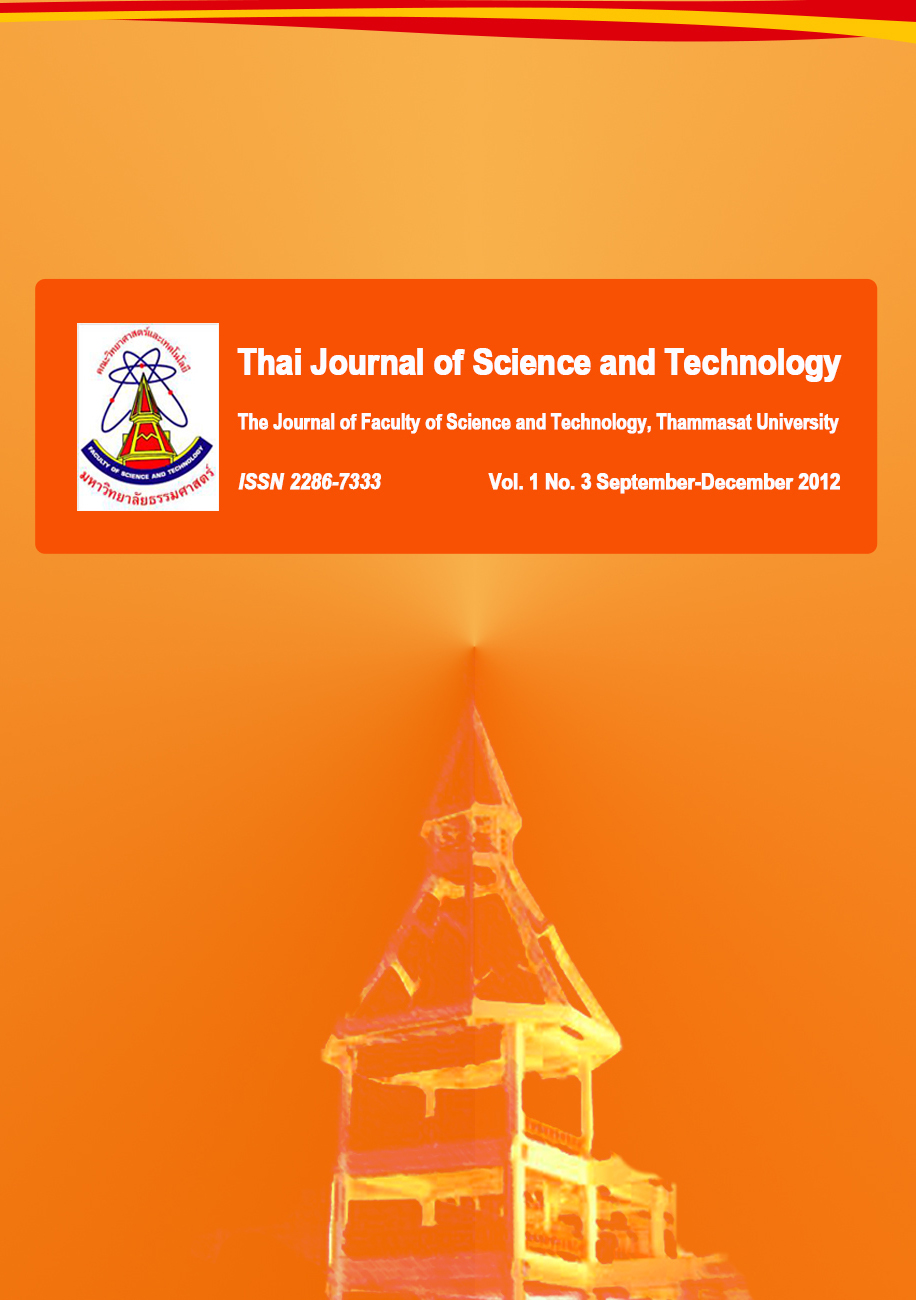การจำแนกข้าวพันธุ์ขาวดอกมะลิ 105 และพันธุ์ปรับปรุงจากพันธุ์ขาวดอกมะลิ 105 ด้วยเทคนิคแฮตอาร์เอพีดี
Main Article Content
Abstract
บทคัดย่อ
ข้าวหอมมะลิเป็นพันธุ์ข้าวไทยที่ได้รับความนิยมและมีชื่อเสียงไปทั่วโลกเพราะมีคุณภาพการหุงต้มดีมากคือเมื่อสุกจะนุ่มและมีกลิ่นหอมน่ารับประทาน แต่ยังผลิตได้ไม่เพียงพอกับต้องการ เนื่องจากข้าวหอมมะลิเป็นข้าวไวต่อช่วงแสงและไม่ค่อยต้านทานต่อโรคและแมลง จึงมีการปรับปรุงพันธุ์และได้ข้าวพันธุ์ปรับปรุงหลายพันธุ์ อย่างไรก็ตามข้าวพันธุ์ปรับปรุงเหล่านี้แม้ให้เมล็ดข้าวที่มีสมบัติทางกายภาพเหมือนกัน แต่จะมีคุณภาพการหุงต้มด้อยกว่า งานวิจัยนี้จึงจำแนกข้าวพันธุ์ขาวดอกมะลิ 105 และพันธุ์ปรับปรุงจากพันธุ์ขาวดอกมะลิ 105 จำนวน 8 พันธุ์ ด้วยเทคนิคแฮตอาร์เอพีดี โดยใช้ไพรเมอร์แบบสุ่ม 72 ชนิด พบว่าไพรเมอร์ 42 ชนิด สามารถเพิ่มปริมาณดีเอ็นเอรวมได้ เมื่อคัดเลือกไพรเมอร์ 31 ชนิด ที่ให้ลายพิมพ์ดีเอ็นเออย่างชัดเจนมาตรวจสอบกับดีเอ็นเอของข้าวแต่ละพันธุ์ พบว่าสามารถแยกความแตกต่างระหว่างพันธุ์ได้ด้วยแถบดีเอ็นเอจำเพาะกับพันธุ์ นอกจากนั้นยังพบไพรเมอร์ที่สามารถจำแนกข้าวทั้ง 8 พันธุ์ ได้ด้วยไพรเมอร์เพียงชนิดเดียว เมื่อวิเคราะห์ความสัมพันธ์ทางพันธุกรรมพบว่ามีค่าสัมประสิทธิ์ความเหมือนอยู่ระหว่าง 0.67 ถึง 0.83 โดยผลการวิจัยพบว่าสามารถจำแนกข้าวพันธุ์ขาวดอกมะลิ 105 และพันธุ์ปรับปรุงจากพันธุ์ขาวดอกมะลิ 105 ทั้ง 8 พันธุ์ ออกจากกันได้ ซึ่งนำไปประยุกต์ใช้ได้จริง
คำสำคัญ : ข้าว; การจำแนก; อาร์เอพีดี; แฮตอาร์เอพีดี; เครื่องหมายดีเอ็นเอ
Abstract
Thai jasmine rice is the most popular due to its pleasant aroma, having soft and tender texture after cooking. But it was not enough to produce, because the jasmine rice is a photoperiod-sensitive cultivar with less resistance to diseases and insects. The rice breeding programs were developed and released new improved cultivars. However, these improved cultivars have the same physical properties of grains, but have the inferior quality of cooking. This research was used the high annealing temperature-random amplified polymorphic DNA (HAT-RAPD) technique to identify 8 rice cultivars, KDML105 and its improved cultivars. Seventy-two random primers were screened and 42 primers could be used for DNA amplification. Thirty-one primers which gave clear amplified products were selected and used to analyze all of cultivars. The result showed differences among 8 cultivars with specific DNA band. In addition, some of 31 random primers were able to identify each cultivar even though using as only one primer. A dendrogram based on polymorphic bands showed genetic similarities among cultivars KDML105 and its improved cultivars with similarity coefficients ranging 0.67-0.83. Finally, this results capable to identify 8 rice cultivars, KDML105 and its improved cultivars, and fit for use to detection the jasmine rice.
Keywords: rice (Oryza sativa L.); identification; RAPD (random amplified polymorphic DNA); HAT-RAPD (high annealing temperature-random amplified polymorphic DNA); DNA marker
Article Details
บทความที่ได้รับการตีพิมพ์เป็นลิขสิทธิ์ของคณะวิทยาศาสตร์และเทคโนโลยี มหาวิทยาลัยธรรมศาสตร์ ข้อความที่ปรากฏในแต่ละเรื่องของวารสารเล่มนี้เป็นเพียงความเห็นส่วนตัวของผู้เขียน ไม่มีความเกี่ยวข้องกับคณะวิทยาศาสตร์และเทคโนโลยี หรือคณาจารย์ท่านอื่นในมหาวิทยาลัยธรรมศาสตร์ ผู้เขียนต้องยืนยันว่าความรับผิดชอบต่อทุกข้อความที่นำเสนอไว้ในบทความของตน หากมีข้อผิดพลาดหรือความไม่ถูกต้องใด ๆ


